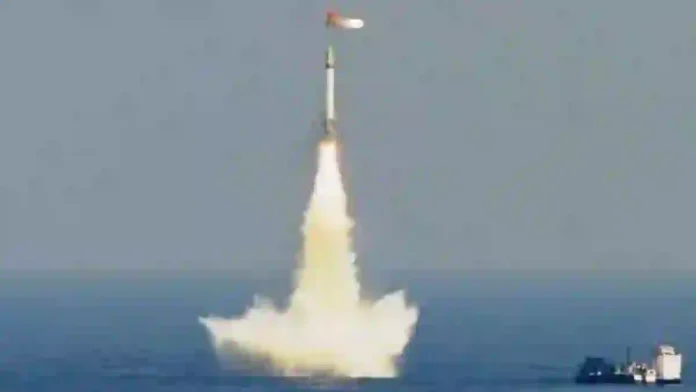Source- AFI
India’s nuclear deterrent has taken a significant step forward with the induction of the K-4 submarine-launched ballistic missile (SLBM) onto the INS Arighat, the nation’s second nuclear-powered ballistic missile submarine (SSBN). While the K-4 boasts a range of 3.500 kilometers, all eyes are now on the upcoming K-5, touted as the “Big Daddy” of Indian SLBMs.
Developed by the Defence Research and Development Organisation (DRDO), the K-5 is a three-stage solid-propellant SLBM with an estimated range of 5,000-6,000 kilometers. This extended range, combined with a payload capacity of two tonnes, would theoretically enable the K-5 to strike targets as far as 8,000-9,000 kilometers with lesser payload This capability would bring major cities like Beijing within reach, even while operating in the Indian Ocean region
The K-5 is expected to incorporate advanced features such as countermeasures to avoid radar detection, making it the fastest missile in its class. Additionally, the missile is likely to be equipped with multiple independently targetable reentry vehicles (MIRV) enhancing its ability to strike multiple targets simultaneously and surpass Agni-5 in Nuclear delivery mechanism and likely will see even an Land-based variant of it due to its compact size.
To accommodate the larger K-5 SLBM, India is developing the stretched S-4 class of SSBNs which will provide more space for missile storage and launch The induction of the K-5 onto these submarines will further bolster India’s nuclear deterrent and strategic capabilities, since first S4 submarine induction has been planned next year. It has been speculated that K-5 SLBM has been tested by DRDO using Fixed Underwater platforms but never officially acknowledged of it
The development of the K-5 SLBM is a testament to India’s growing technological prowess in the nuclear domain. it signifies a major milestone in the country’s efforts to achieve strategic autonomy and ensure its security against potential threats
Agencies




